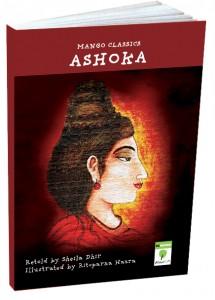
He was christened ‘Ashoka’ to anoint him as one who would wipe out sorrow. He was also described as ‘Priyadarshi’- beloved of the Gods. One of the most widely written about monarchs in the world, he holds his place in history as one who is an example of a ruthless monarch-‘Chandashoka’ being retrospective about his life at some point in time and becoming the Dharmashoka, thereby justifying the name he was christened.
Ashoka, a part of not only ancient Indian history but also of our present country’s philosophy as espoused in the national flag and the national emblem, has been written about in a language appropriate to his splendour.
The language used raises the standard of the average reader, pitching on just the appropriate word, without compromising on the lucid flow or the intensity of the person.
To quote Michel Danino, a well established Indologist, with a passion of promoting the essential values of India heritage in every field of life, he excavates the true quintessence of India’s foundational strength.
“As a nation, we often take pride in our history, yet in my decade-long interactions with Indian students and teachers, I have rarely found any in love with the discipline. Rather, comments like “I hate history” or “History is so boring” sum up the general feeling. You are likely to share it if you open the latest history textbook prescribed for Class VI in 2010–11 by the Tamil Nadu government under its “common syllabus”.
With this in the background, I believe this book has done justice to not only the reign of Ashoka but his personality as well, raising the kind if issues that makes not for a change in mind set, but brings about a change of heart!!
The pages 31- 35 show you that he responds as anyone with his power would to his opportunities. Yet, listening to his inner turmoil made for a transformation that any human being is capable of. The story of the beggar asking him to infuse life in a dead child and the powerful king listening to the beggar shows his humility and ability to take the words of his subjects to heart. He was able to put his victory in the perspective of the common man on the street.
The famous British historian H.G. Wells has written “Amidst the tens of thousands of names of monarchs that crowd the columns of history the name of Ashoka shines, and shines almost alone, a star. He has come to be regarded as one of the most exemplary rulers in World History.”
Here is a book that talks of ‘his story’ in a flow that holds interest till the end.
If one considers, the layout gives you a gallery of the characters so appropriate for 10 year olds. With plenty of illustrations, it enhances the engagement of the book.
The illustrations are detailed and appropriately highlighted. The colours are attractive.